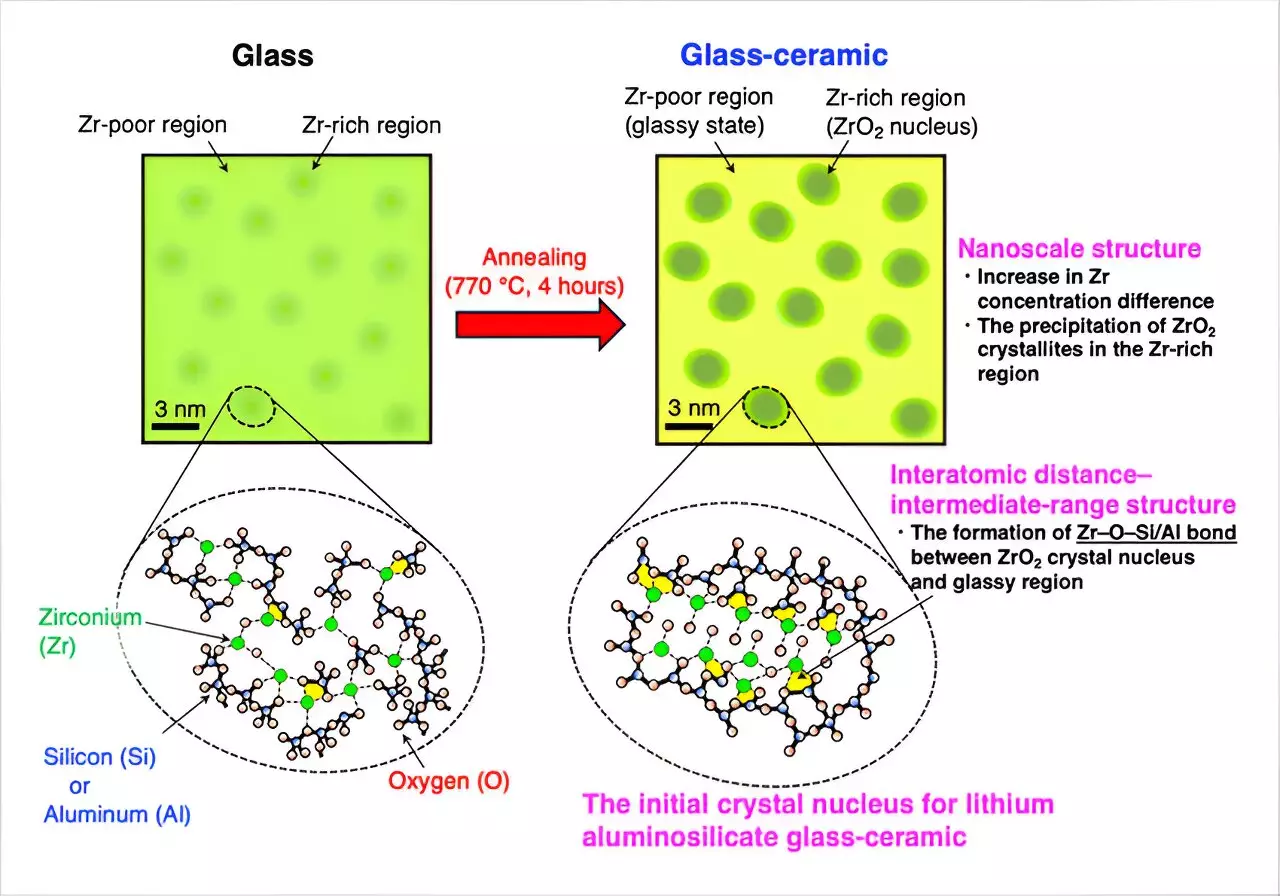A groundbreaking research collaboration between the National Institute for Materials Science (NIMS), AGC Inc., and the Japan Synchrotron Radiation Research Institute (JASRI) has unveiled pivotal insights into the evolutionary processes of glass as it transitions into glass-ceramics. Published in the prestigious journal NPG Asia Materials, this study not only heralds a new era in material science but also promises to enhance the performance of glasses used in diverse applications. By examining how glass partially crystallizes, the research team has illuminated the complex origins of crystal nucleation—a key mechanism in strengthening the inherent properties of glass.
Innovative Methodology: A Deep Dive into the Atomic Landscape
To conduct their analysis, the researchers employed advanced synchrotron X-ray technology, enabling them to scrutinize the glass at multiple scales—from atomic configurations to nano-sized structures. This multiscale approach allowed for a comprehensive understanding of how crystal nuclei emerge within the glass matrix. The findings are significant because they challenge previous assumptions regarding glass formation and pave the way for more controlled crystallization processes. The scientists specifically focused on zirconium oxide-doped lithium aluminosilicate glasses, which are widely utilized in both industrial and domestic settings due to their favorable properties.
Unraveling Complexity: Zr-Rich Regions and Their Function
One of the fundamental revelations of this research lies in the identification of zirconium (Zr) concentration variations within the glass. Heat treatment resulted in distinct differences between Zr-rich and Zr-poor regions. Within these Zr-rich areas, nanoscale crystal nuclei were discovered, marking an essential step in the nucleation process. The clear demonstration of Zr within specific bonds with silicon and aluminum through oxygen further solidifies the understanding of how crystal growth initiates. This intricate interplay between elements showcases the sophistication of glass as a material, as well as the potential for innovative applications stemming from this knowledge.
Beyond the Study: Future Implications for Material Development
The implications of this research extend beyond theoretical knowledge. By developing a robust model that clarifies crystal nucleation mechanics across varying scales, the team aims to influence the synthesis of glass-ceramics with enhanced characteristics such as increased strength and heat resistance. The structural analysis techniques applied in this study hold promise for investigating a spectrum of practical materials with complex compositions. With further exploration, these methodologies could lead to the development of groundbreaking functional materials tailored for advanced technological applications, positioning material science at the forefront of innovation.
The strides made by this research team represent not only a monumental academic advancement but also a potential catalyst for industrial revolutions in how we understand and utilize glass. The intricate relationship between structural elements offers a new lens through which we can observe material behavior and enhancements. This study marks a significant milestone in realizing the full potential of glass-ceramics, offering exciting prospects that could reshape the future of material applications across numerous fields.

